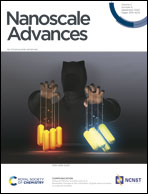A non-oxidizing fabrication method for lithographic break junctions of sensitive metals
Abstract
Electrochemically active metals offer advanced functionalities with respect to the well-established gold electrode arrangements in various electronic transport experiments on atomic scale objects. Such functionalities can arise from stronger interactions with the leads which provide better coupling to specific molecules and may also facilitate metallic filament formation in atomic switches. However, the higher reactivity of the electrode metal also imposes challenges in the fabrication and reliability of nanometer scale platforms, limiting the number of reported applications. Here we present a high-yield lithographic fabrication procedure suitable to extend the experimental toolkit with mechanically controllable break junctions of oxygen sensitive metallic electrodes. We fabricate and characterize silver break junctions exhibiting single-atomic conductance and superior mechanical and electrical stability at room temperature. As a proof-of-principle application, we demonstrate resistive switching between metastable few-atom configurations at finite voltage bias.



 Please wait while we load your content...
Please wait while we load your content...